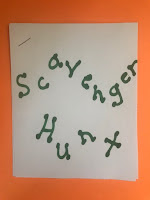These are quick and easy to make and can be used in so many ways to replace worksheets.
Directions: Lay four to six pieces of paper on top of each other. Staple the four corners. Cut into fourths, and you’ll have four little books.
Use for: days of the week (seven sheets of paper)
seasons (four sheets of paper)senses (five sheets of paper)
planets, continents, etc.
Skinny Books
Directions: Make long skinny books by stapling four times down the short side and cutting across horizontally.

Use for: writing names left to write
practice pre-writing strokes
repeating patterns
writing numerals
sight words or spelling words
writing sentences
THINK PADS
Children can use these to take notes as they listen to a book or watch a video. They can draw, write words, or simply scribble. Encourage them by commenting, “You’re taking notes just like the big kids do in high school and college! Isn’t it fun to know how to take notes to help you remember?”
Children can use these to take notes as they listen to a book or watch a video. They can draw, write words, or simply scribble. Encourage them by commenting, “You’re taking notes just like the big kids do in high school and college! Isn’t it fun to know how to take notes to help you remember?”

What can you find out?
Collect non-fiction books about a topic that you will be studying in your class. Place the books on a table along with think pads, paper, and pencils. Let two children work together and take notes to look in the books and see what they can find out (learn) about the topic.

Scavenger Hunt
Use think pads to find different objects in the classroom that relate to reading, math, or science standards. They might go on a scavenger hunt for objects that start with “CH.” How many ovals can they find? Can they make a list of nouns? Can they find objects that a magnet will attract?



